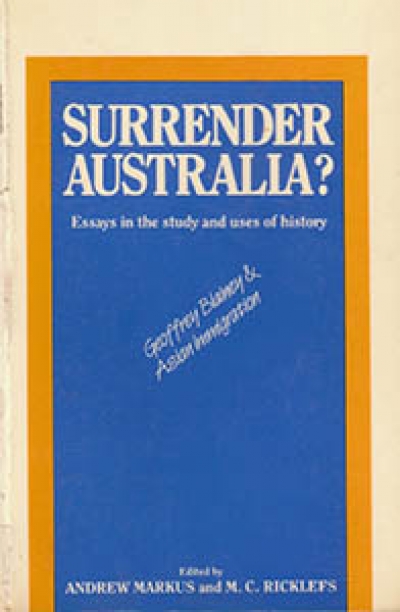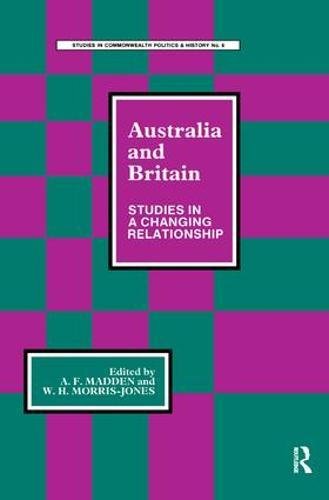Anthology
The D Generation Bumper Book of Aussie Heroes by John Alsop, Santo Cilauro, Tom Gleisner, Andrew Knight, Rob Sitch, and Magda Szubanski
It’s finally happened. I’m not funny. All my life I’ve been told I’m a ratbag. I’m a maniac. I need help. I see life different. Hint of lunacy in the blood. Touch of madness in the haircut. Dickins, he’s crazy. Dickins, he thinks like the turn-off to Shepparton.
... (read more)I have never met Vivian Smith but respect him awfully. The remarkable thing about his editing of this new anthology of Australian poetry is that his own work is not in it. This is unprecedented among recent anthologies, and may of course be a printing error. Even that excellent poet of Buddhist leanings, Robert Gray, was unable to achieve such perfect nirvana some years back in his Younger Australian Poets. I think Vivian Smith could at least have included here his very fine poems ‘The Names’, which appeared in the most recent Mattara Award anthology.
... (read more)Reading Kevin Child’s book, Men on Women, creates the irresistible temptation to answer on behalf of the women. I can imagine them offering the following kind of replies to their sons and lovers.
... (read more)Unsettled Areas: Recent South Australian short fiction edited by Andrew Taylor
A reviewer is bound to behave as a different kind of reader from others, especially when dealing with a mixed collection like Unsettled Areas. Other readers can pick and choose, skip the duller bits, and take as long as they like, whereas I’ve read closely every story, at least twice, in the space of two days. Then I’ve let them settle into my imagination for another day or so to see what impressions have lasted, before taking another look. I looked especially hard at the ones I found unsatisfactory, in case my mind had changed. I’ll leave these until later.
... (read more)Surrender Australia?: Essays in the study and uses of Australian history edited by Andrew Markus and M.C. Ricklefs
At the August 1984 conference of Australian historians, the Public Lecture Theatre at Melbourne University was packed to hear a panel of distinguished colleagues discuss Geoffrey Blainey’s creation of the public debate on Asian immigration. Blainey did not attend. His mentor Manning Clark did, though he refused to denounce his most famous pupil. Surrender Australia? is largely the product of that meeting. Historians take themselves rather seriously and already there have been complaints that a concerted attack on one of the discipline’s favourite sons is unprecedented. Letters to The Age were denouncing the book as ‘an attack on a great Australian’ well before it was published or the correspondents could see the contents. Public controversy is certainly rare among local historians, being largely confined to such esoteric matters as whether Australia was settled to get rid of convicts or to acquire flax, an argument in which Blainey took a major role. In a small society, academics do not usually denounce each other in the fashion long acceptable in central Europe or America. Equally, they do not often engage in public controversy on matters which draw in the vulgar multitude. While professional historians are not very radical, they mostly subscribe to liberal views, among which tolerance for minorities and for the ideas of others are the most acceptable. Blainey presented his colleagues with a dilemma. They could draw up their skirts and pass by on the other side, or they could publicly disagree with him.
... (read more)The Half-Open Door edited by Patricia Grimshaw and Lynne Strahan
The title of The Half-Open Door implies questions relating to the lives of modern professional women in Australia, and bears on the current attention, political and academic, being given to women’s matters. These questions are made explicit in the book’s Preface, which asks why women enter the demanding areas of the professions and the arts, and why so few achieve positions of high status in these fields. Contemporary evidence, formal and informal, of the ambiguity of opportunity for women in Australia is commonplace. For instance, the typical composition of academic humanities departments is like that in which the reviewers work: sixty-four per cent of the student body yet only twenty per cent of the full-time academic staff are female. Why the door – which was opened relatively early for women in Australia by university admittance, emancipation and equal job-opportunity –remains half-closed is a question that needs to be asked. Regrettably, this volume goes only half-way to suggesting an answer.
... (read more)Australia and Britain: Studies in a Changing Relationship edited by A.F Maddern and W.H. Morris-Jones
This book of a dozen essays, with a foreword by Sir Kenneth Weare (his last substantial piece of writing before he died), concentrates on various aspects of the changing Anglo-Australian relationship.
It is an enlightening collection, for most of the essays test and in some cases challenge the ‘conventional wisdom’ which pervades recent analyses of Australian life. This is especially useful to this reviewer who, as an immigrant of two years’ standing, discovered on arrival a veritable industry of writers in various disciplines all concerned with the search for an Australian identity. Two essays, for a start, provide the leaven in reassessment of George Johnston’s literary quest for ‘the way home’, as well as Donald Horne’s ‘Lucky Country’ theme and Alan Renouf’s ‘Frightened Country’ analysis. The first is interestingly dealt with by Alan Lawson in his ‘Acknowledging Colonialism: Revisions of the Australian Tradition’, which challenges several half-truths which have become maxims. Horne and Renouf immediately spring to mind in J.D.B. Miller’s ‘An Empire That Don’t Care What You Do’. This essay is a ‘must’ for those people who view most past (and some present) Australian leaders as supine in their dealings with British counterparts.
... (read more)Visions of Mowanjum: Aboriginal Writings from the Kimberley by Daisy Utemomorrah et al; Maisie McKenzie
How, not being an anthropologist, do you set about reviewing tales and fragments of experience from Aboriginals of the Kimberleys? You might begin by stating your difficulties.
People like me can usually establish some kind of empathetic link with the arts and traditions of many cultures. If we cannot feel our way into them, at least we can derive intellectual pleasure from contemplating them: as a rule there is some point of contact, although to us, of the western heritage, nothing can ever be as real as what belongs to the family of Hellenism. I can ‘make something’ of Hindu sculpture, Inca masks, Negro jazz; perhaps even of shamanic spells.
... (read more)In his introduction to this collection of essays the editor, Ross Fitzgerald, remarks: ‘Our age is not exactly brimming over with positive affirmation and joyful anticipation.’ One wonders whether or not there has ever been a period of human history which such an assertion would accurately describe, let alone whether this would be a particular occasion for celebration. After all what gives an aggressive advocate of military solutions to current political problems a certain degree of hope may well cause the pacificist the deepest despair. There is no unity and certainly no necessary common goal to what gives diverse groups and individuals their respective sources of hope and pessimism.
... (read more)Australian Capital Cities: Historical Essays edited by J.W. McCarty and C.B. Shedvin
Anyone interested in quickly assessing the scope, direction and lacunae of urban history in Australia would be well advised to read this attractively priced and presented anthology. Although only two of the ten contributions have been specially commissioned, the rest are recent pieces, mostly from out-of-print, expensive or turgid larger works. These are two general essays, an article on each of the capitals (with the exception of Perth), and three specialised pieces on aspects of city growth (sub-division of Paddington 1875-90, essential services and Melbourne in the 1880s, and East Perth 1884-1904).
... (read more)









